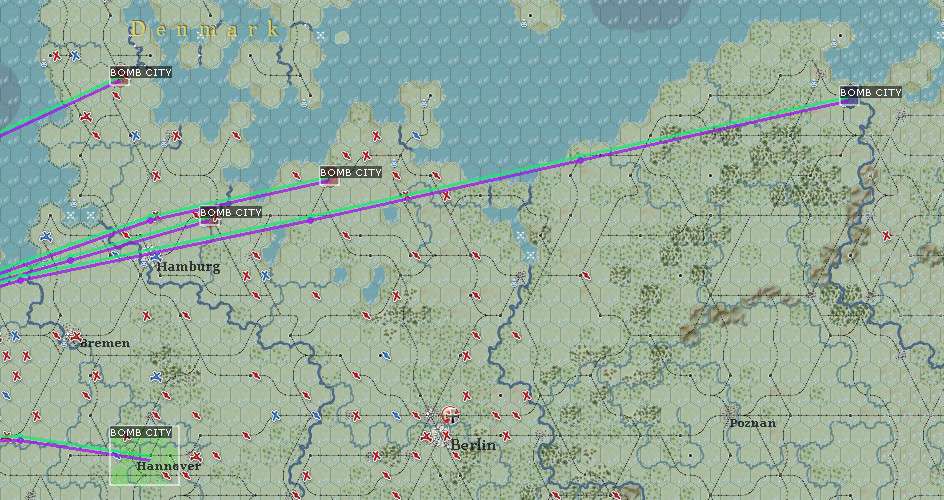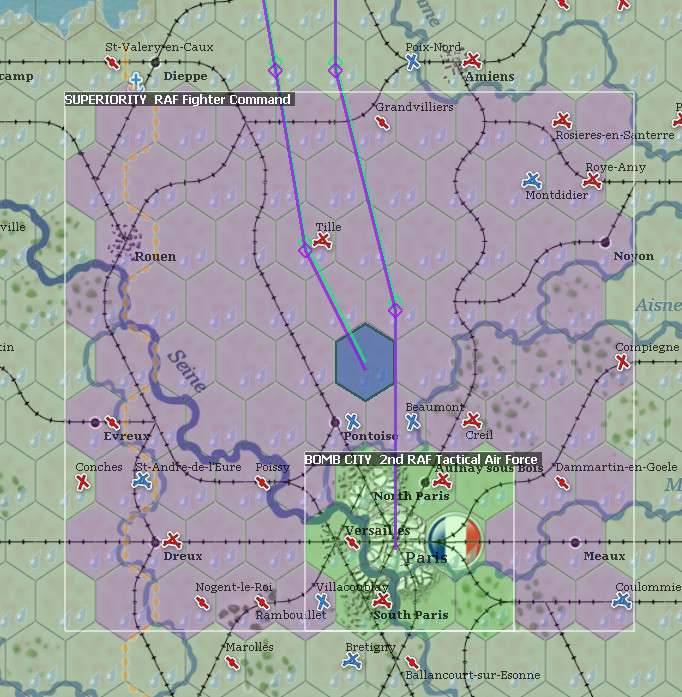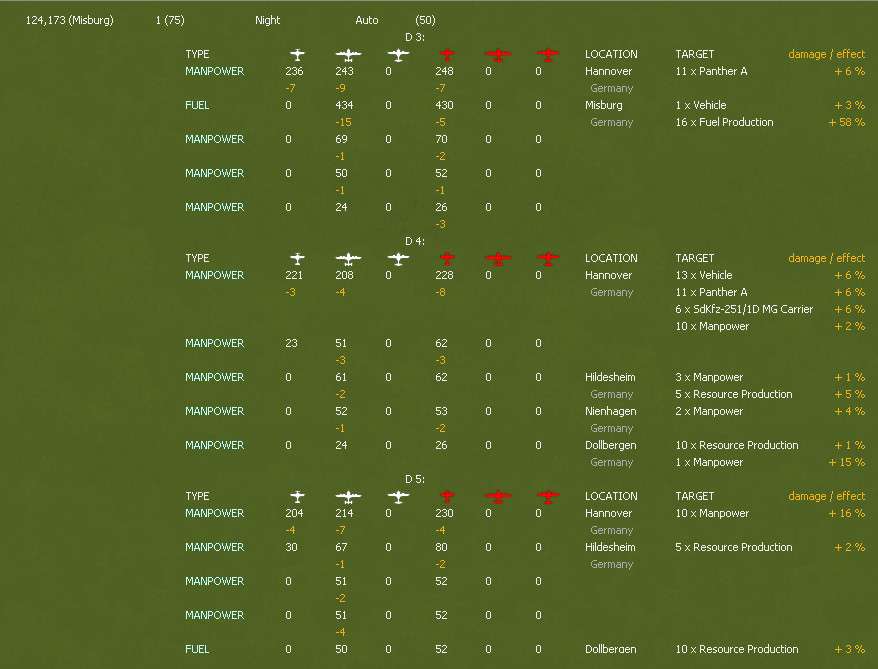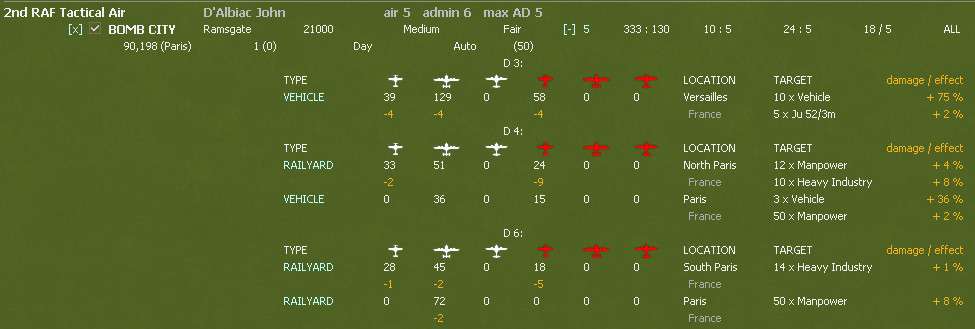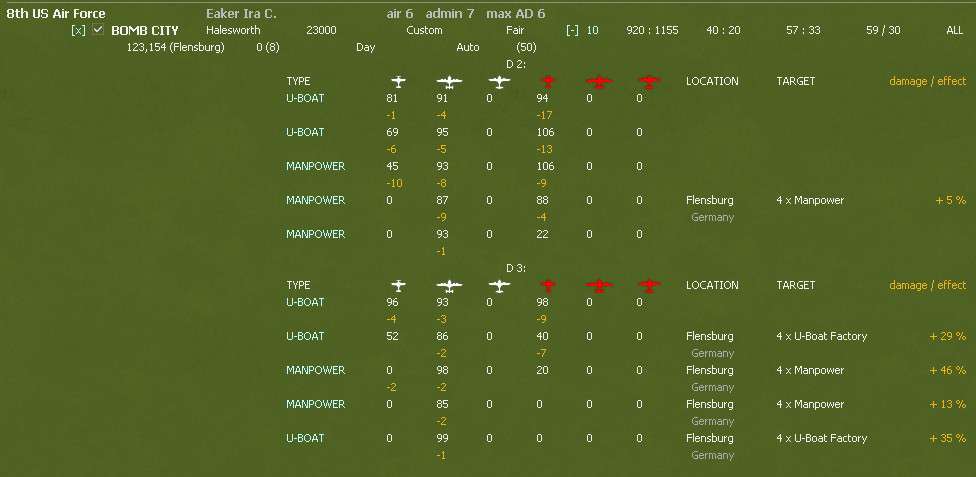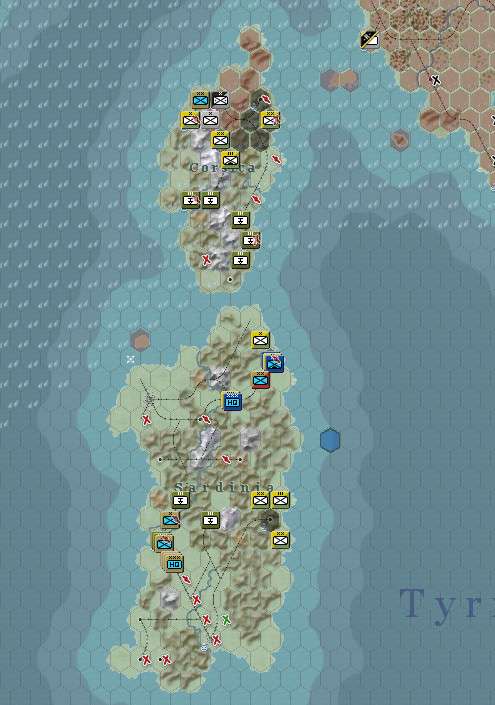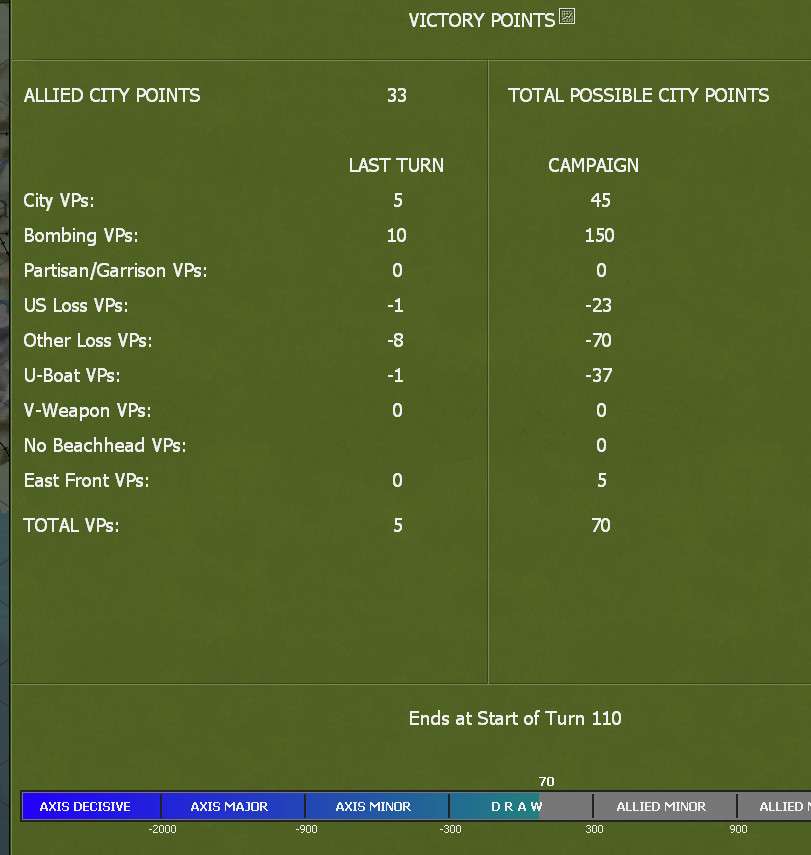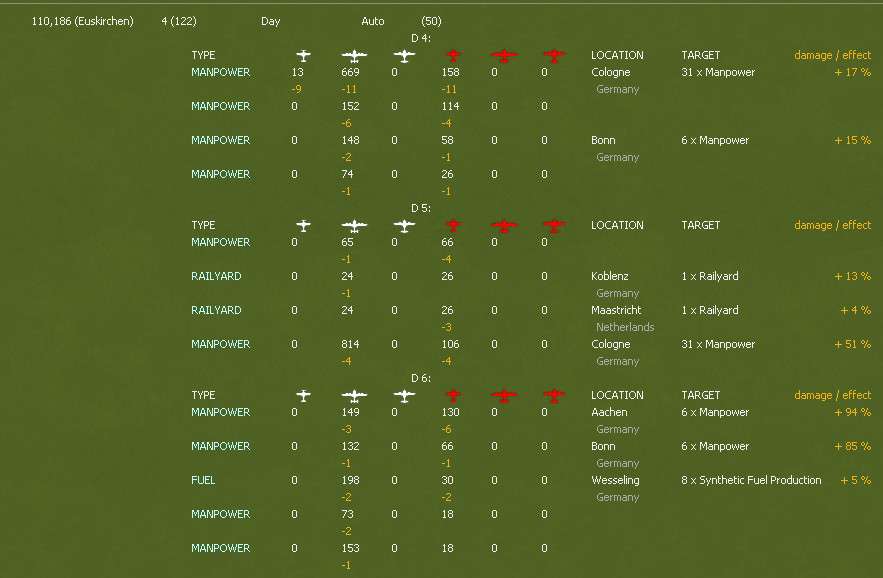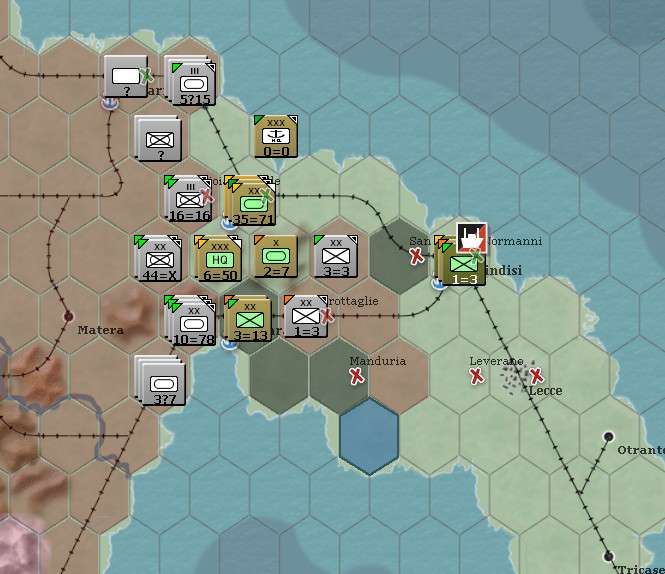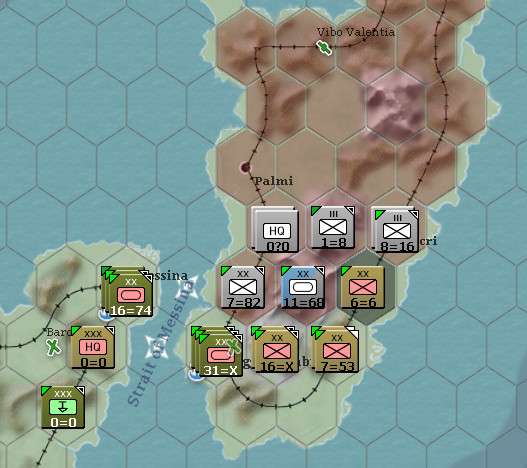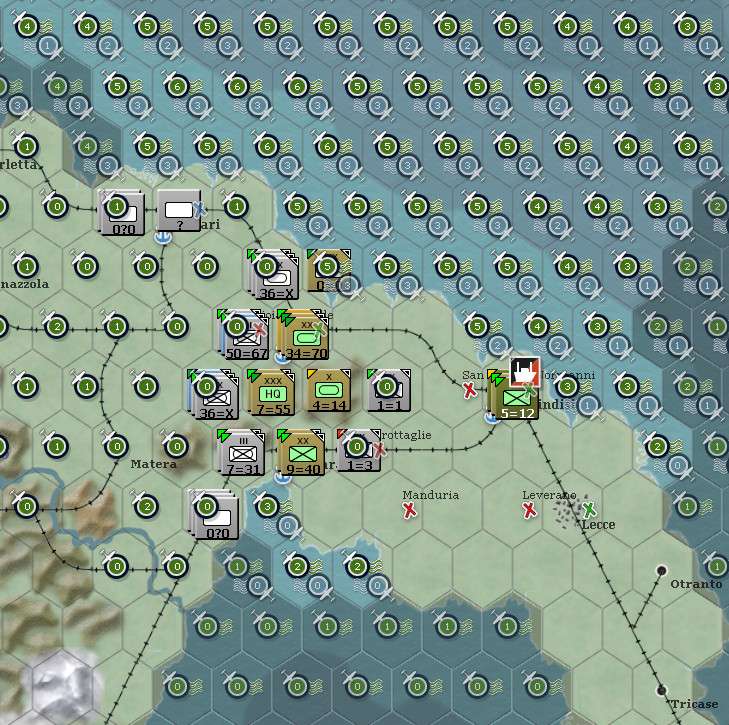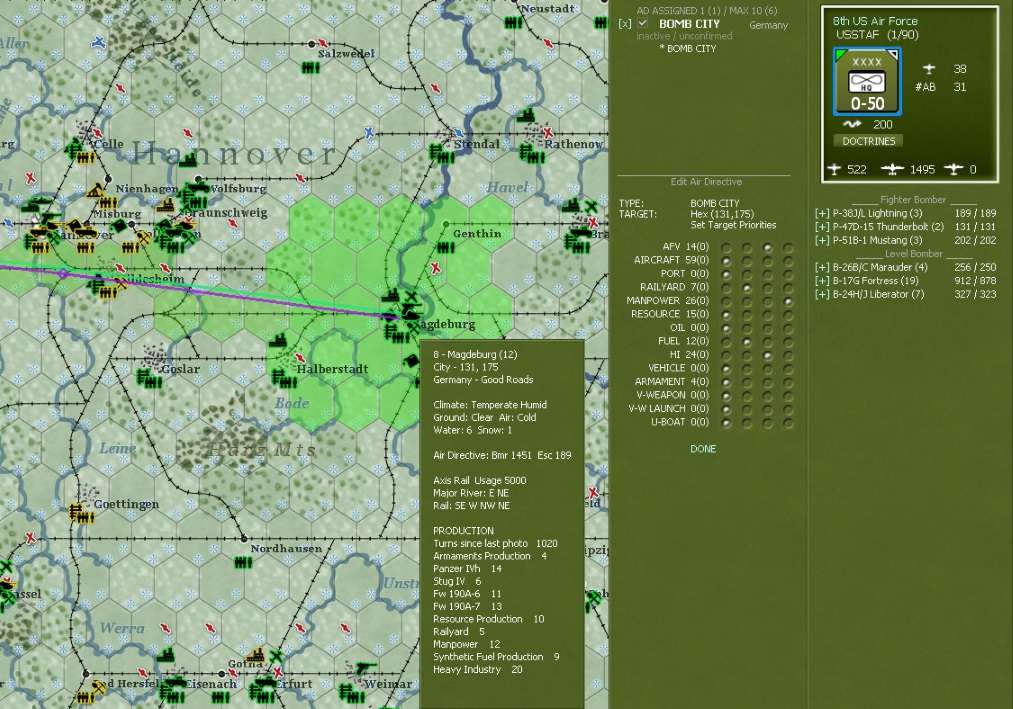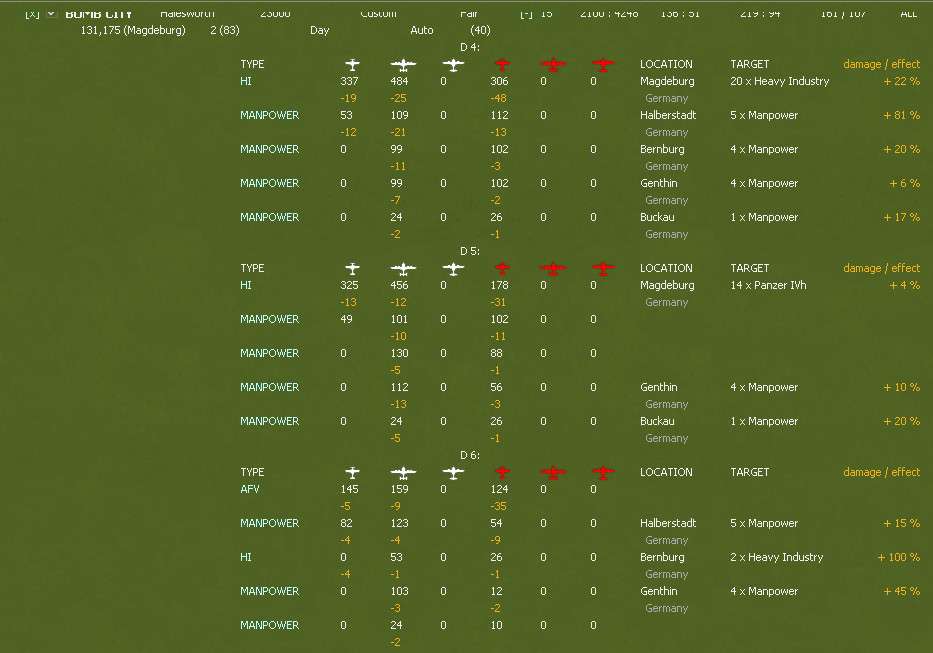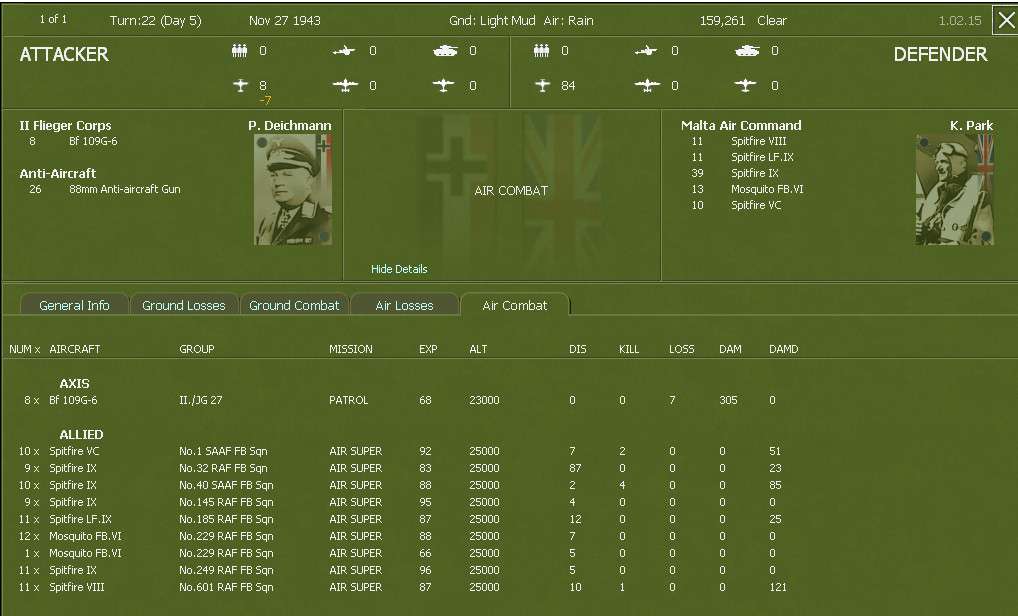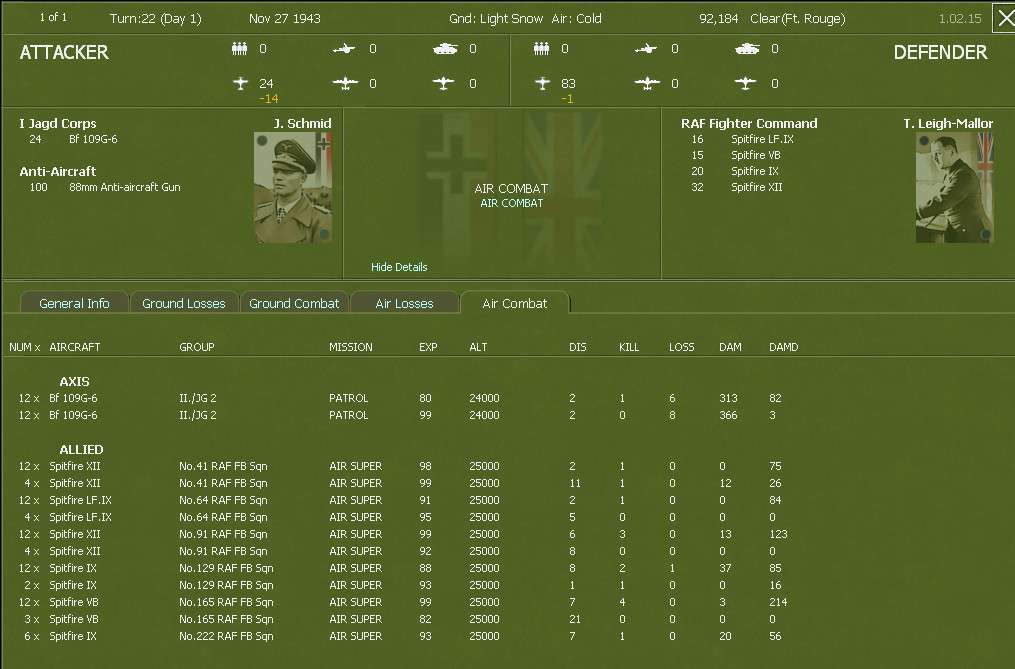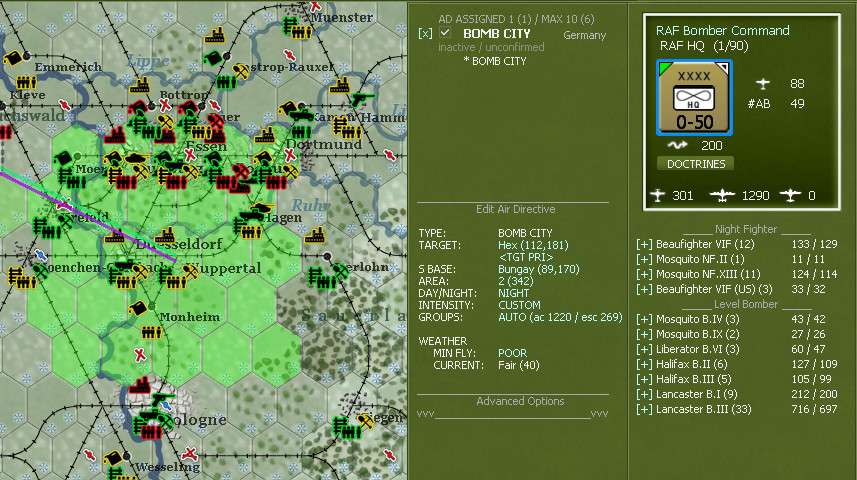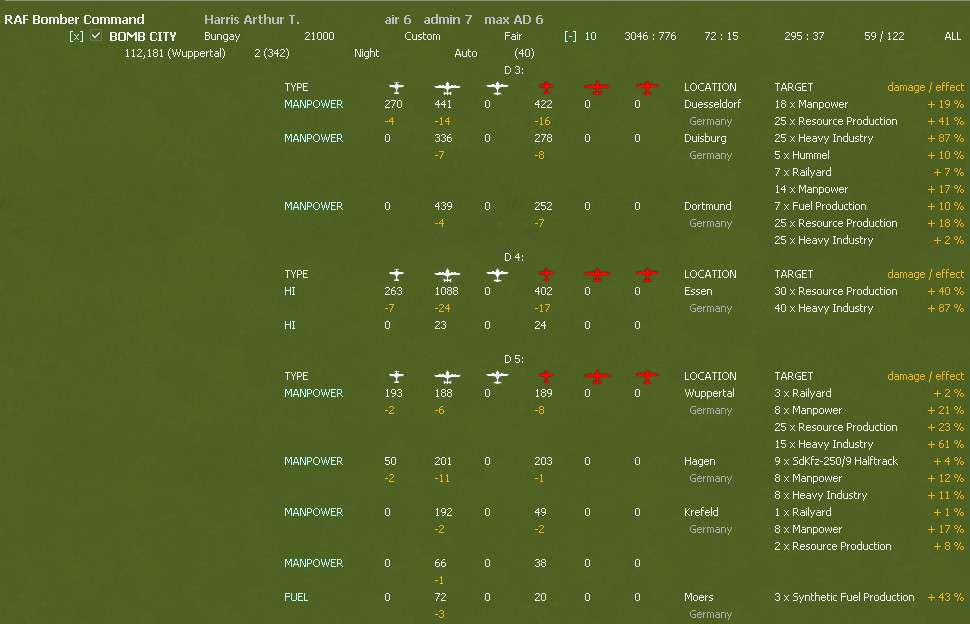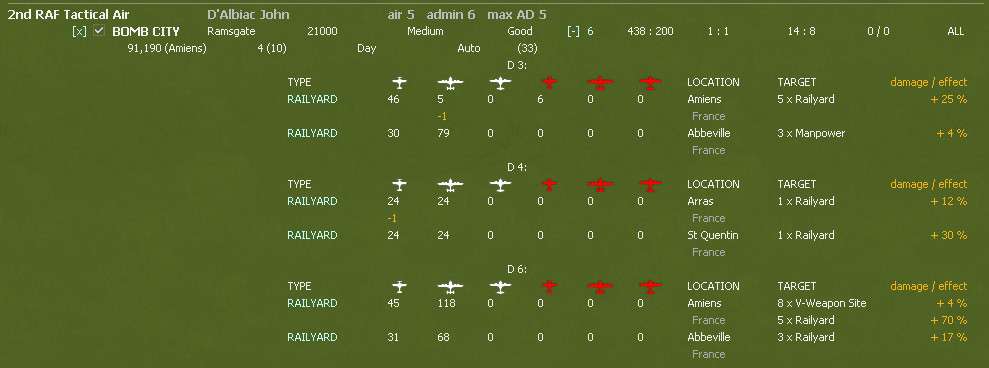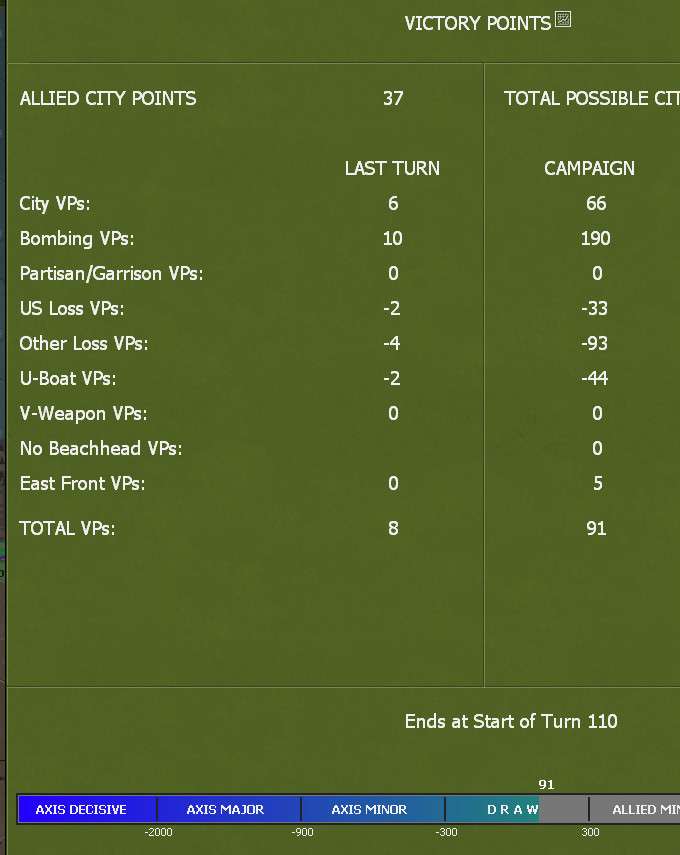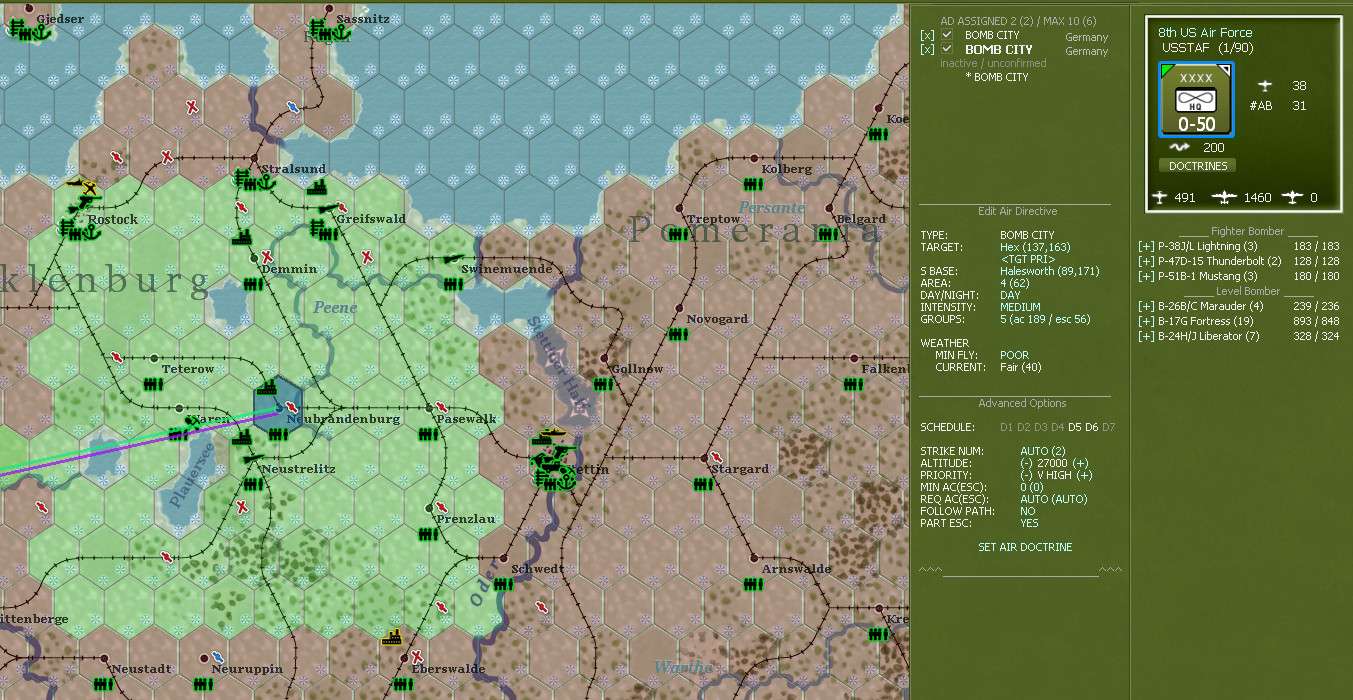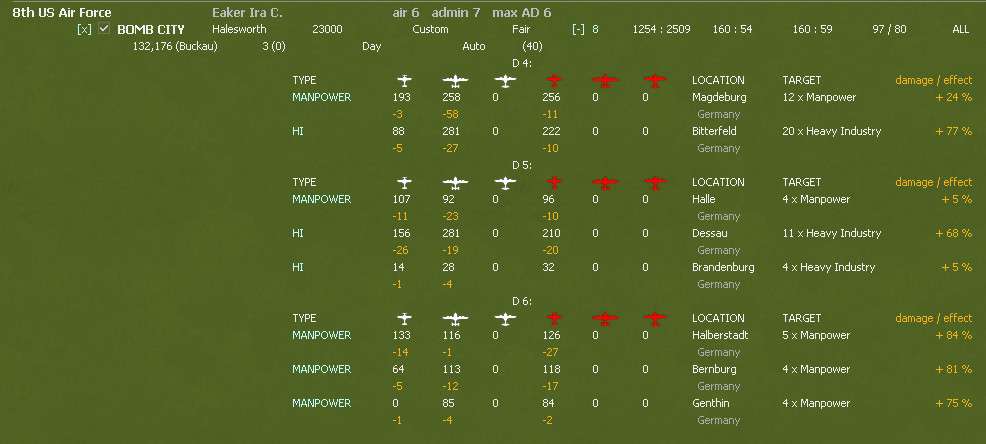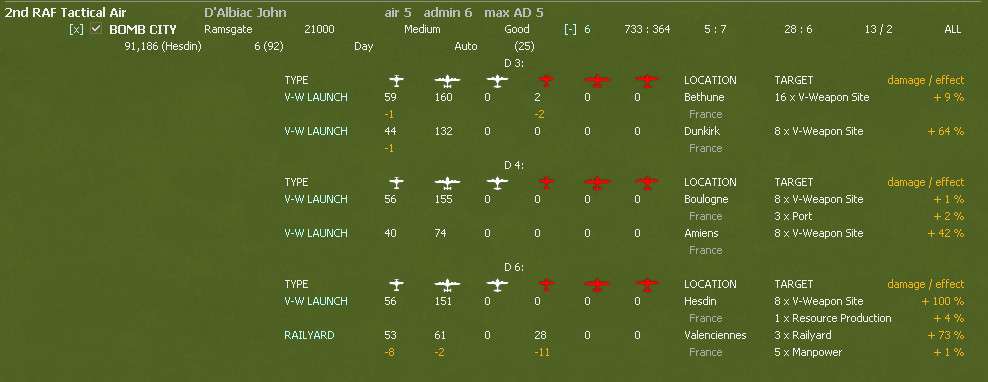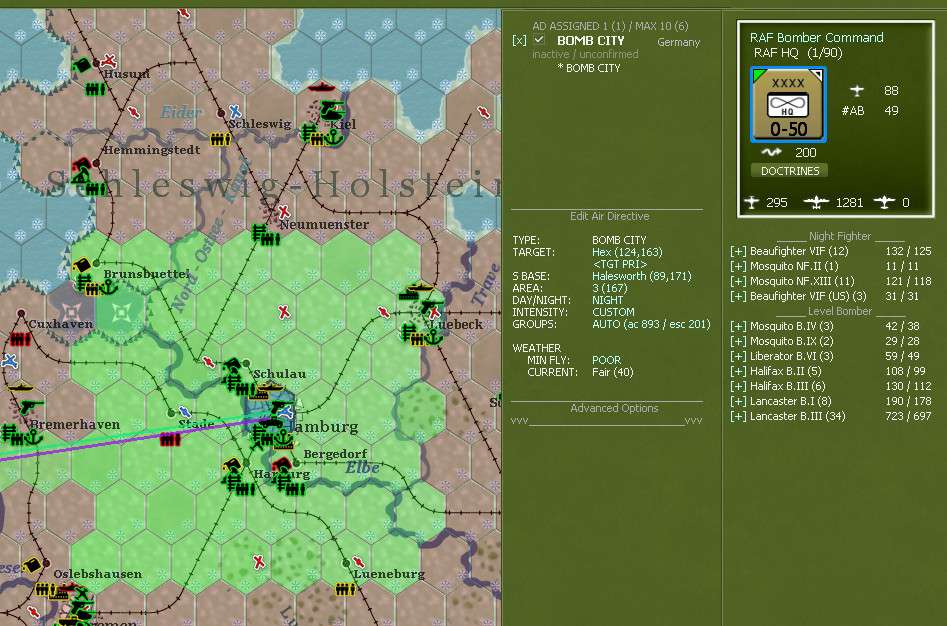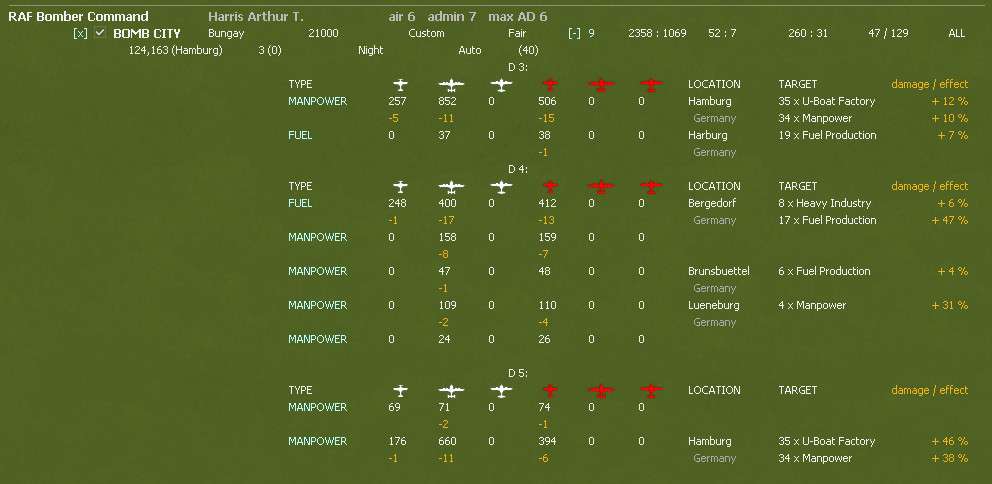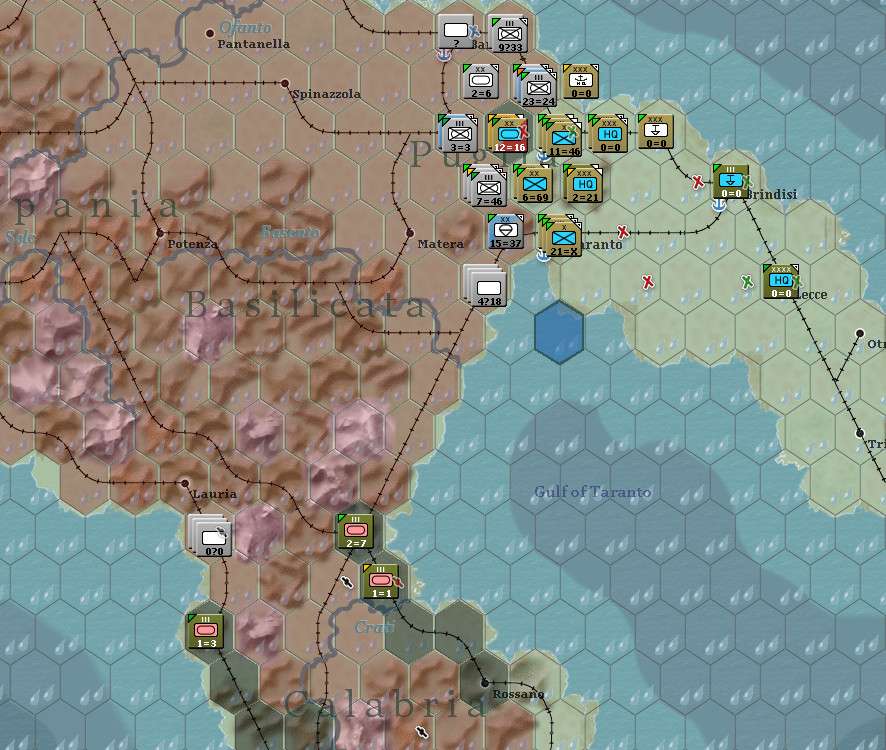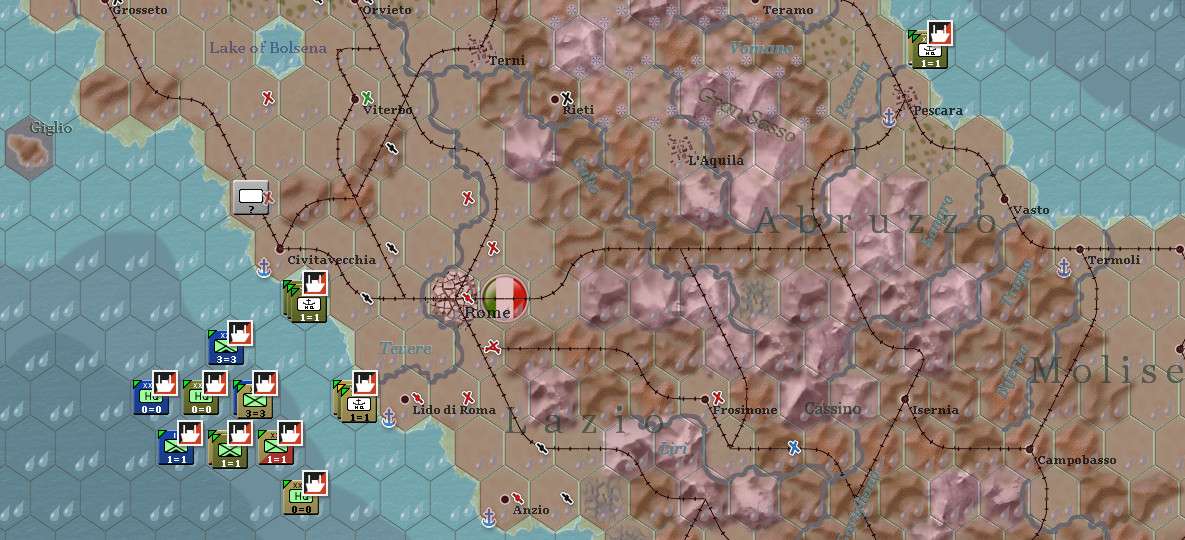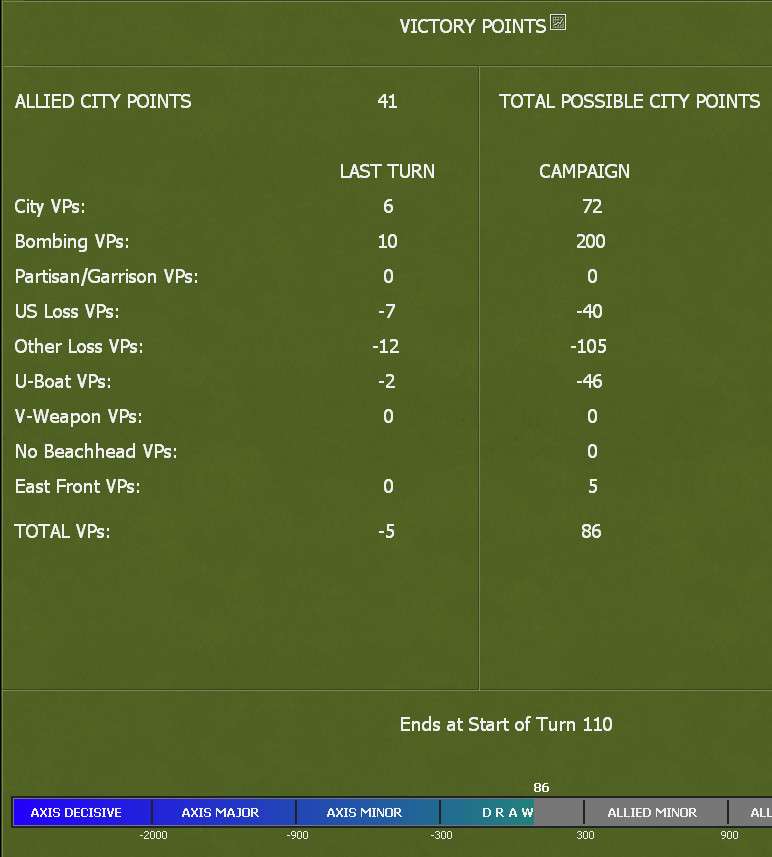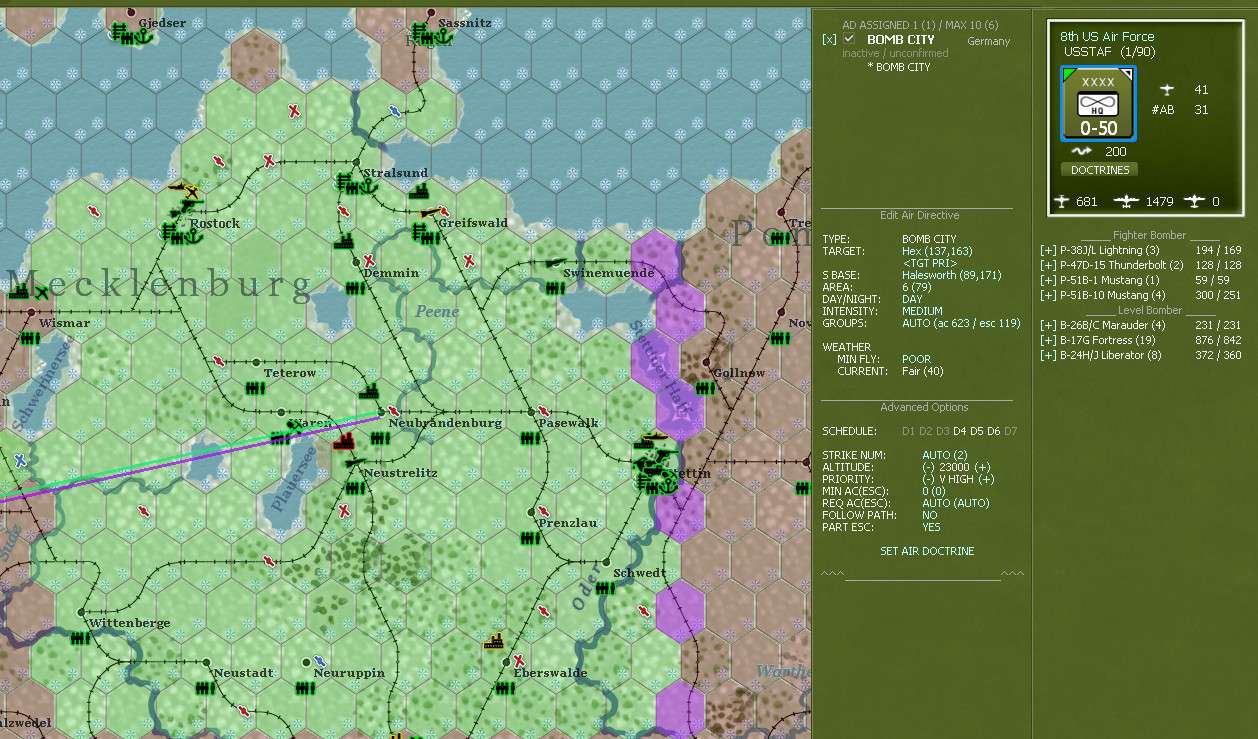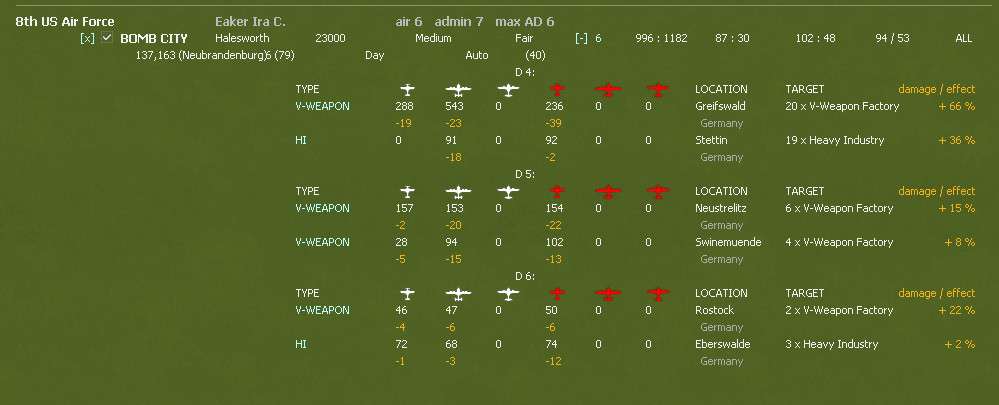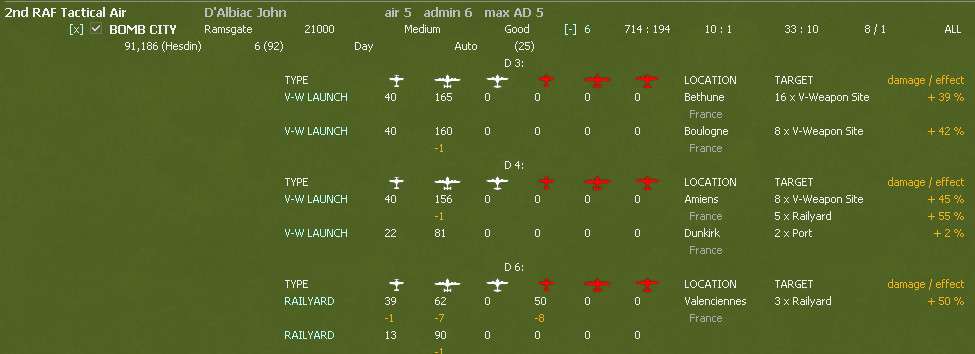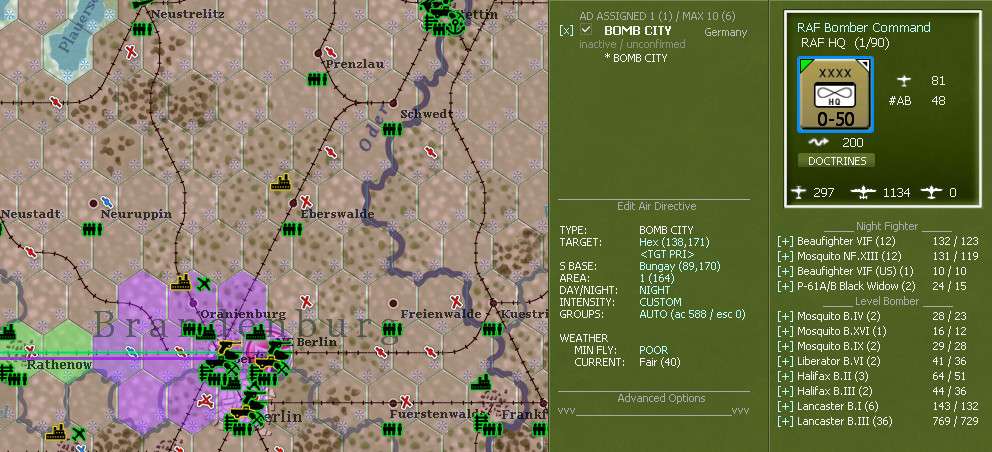T25-26
Both these turns had blizzard conditions in NW Europe so again rested the Allied airforces in the UK. In Italy bombing was limited to tactical missions and the German rail yards.
VP situation for T26. Note that Rome is producing a real boost to the city line.
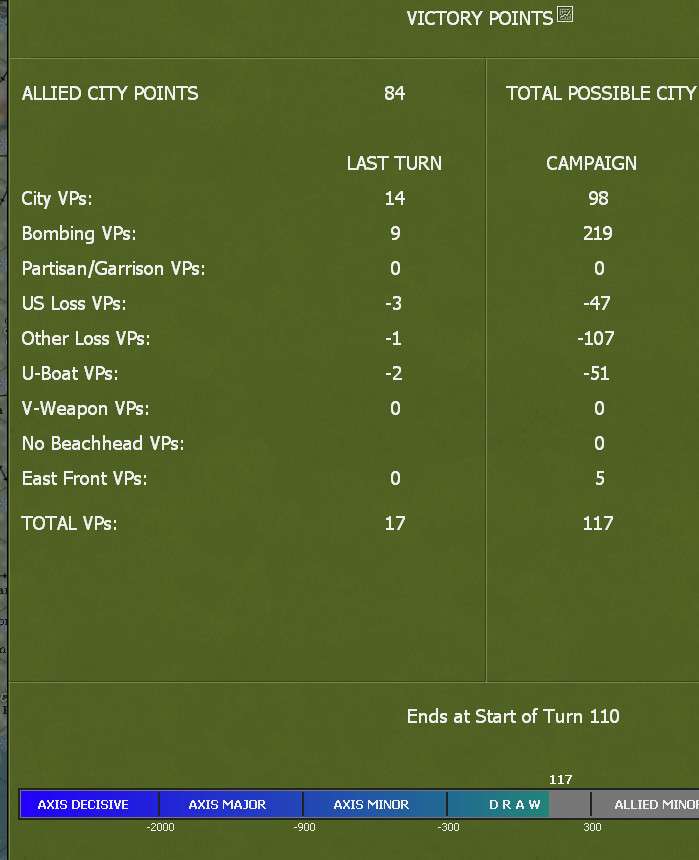
Situation on the ground for T25, by T26 had almost linked up the Pescara and Rome landings and some armour has arrived at Pescara. Note that Naples was undefended and Bari just captured. These two turns saw a lot of German attacks on my lines north of Rome.
Still some fighting in Calabria but most the German units now destroyed so 8A can push north.
Need to think about what to do in Italy now. One problem is that till Naples is repaired, supply is a real problem so will probably have to pause in any case. Also need some of the units (and airpower) back in the UK.
Main question is what is worth fighting for. Find that Rome is the real prize and secondary gains are as much lost combat VP as anything.
Anyway started to prepare some further divisional landings up the Adriatic coast but otherwise will rest and let the supply net improve.
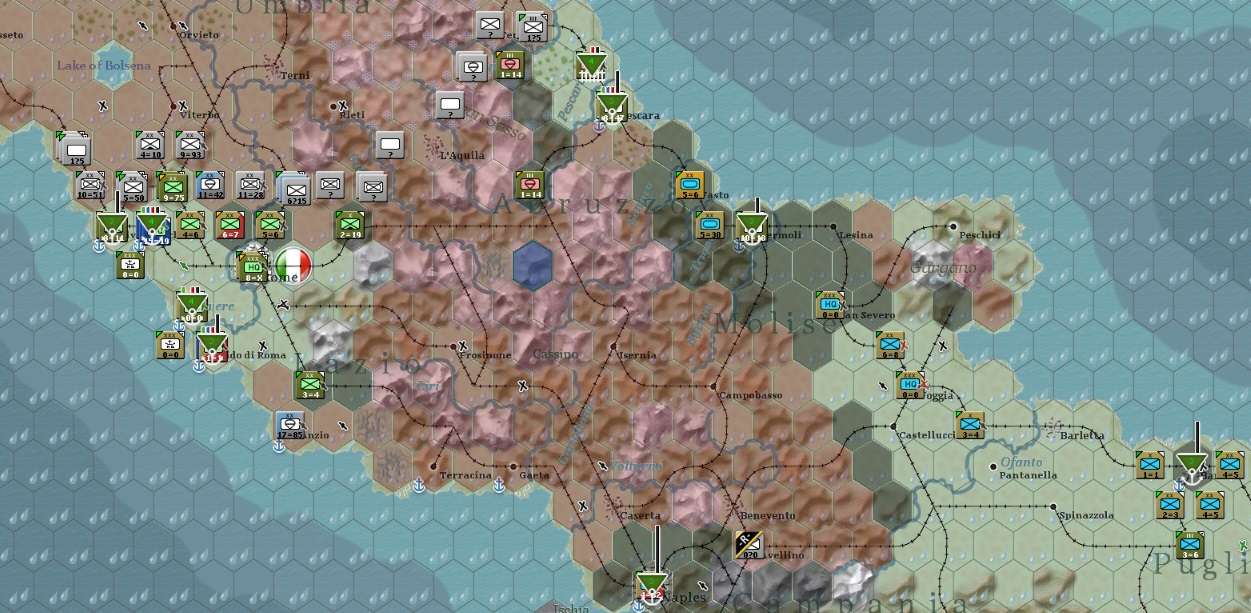
Also need to start planning for France. Have 2 TF in UK ports so time to pick a spot. I'll briefly discuss what I think are the options.
In the maps I've marked both possible landing sites and where the TF would need to stay to maintain the ports.
NE France has some advantages. Its so close to the UK that FB can often operate without fuel tanks (note in the UK I am building up every airbase I can). You are to the east of the Seine so that undermines an important German defensive line. It takes out a lot of the V-weapon sites.
Problem is that you will need to divert units to the west to clear out the bigger ports so that weakens any offensive. Also the initial battles are grim as you have no defensive protection.
Here I think there are two blocks. Around Boulogne and at the mouth of the Somme. Boulogne is a mess of disconnected landings (even if you risk a Dieppe style direct assault), you need 3 TF to protect the landing ports and at least one will take attrition (unless you capture Boulogne).
The Somme option is better. I've used this against the AI before and its TF efficient, gives you a connected set of beach-heads and you can use the Somme itself to protect one of your flanks. I think this is a good spot. Only main weakness is you only get one rail yard as a result.
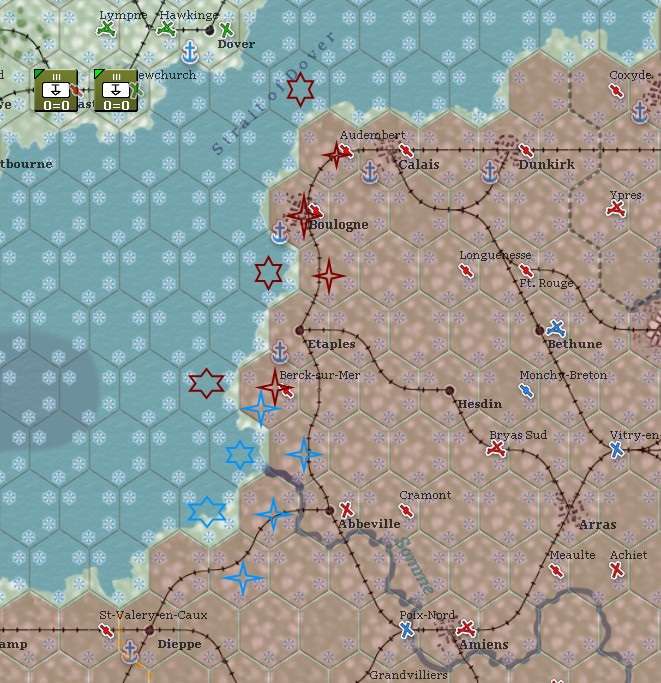
Normandy. There is nothing much wrong with variants of the historical landings. The terrain protects you, its TF efficient, but the actual breakout is a challenge and you will then (at least in PBEM) face the problem of crossing the Seine.
Second option is to split the landings around Le Havre. This is a bit of an odd choice but my logic is that you will not take Le Havre easily (but you can isolate it using Paratroops). You'll have to abandon one of your landing ports (too much naval attrition from Le Havre) but otherwise you are to the east of the Seine but well placed to take the Brittany ports and Paris.
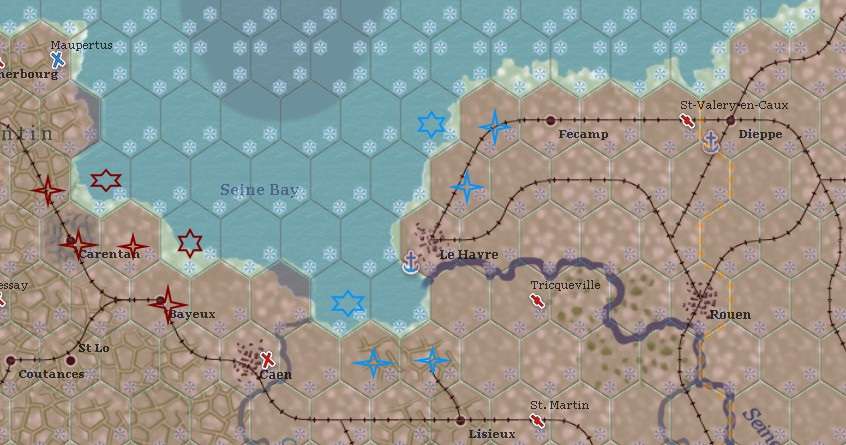
Finally Brittany. Issue here is you are a long way to the West and most German players will have time to set up around Paris. But I've seen AARs with the St Malo landings and it can be effective. Usually a quick easy breakout, you should take St Malo quick enough to avoid too much naval attrition.
But you are a long way from the UK for airpower, so this will cost fatigue, load outs and operational losses.
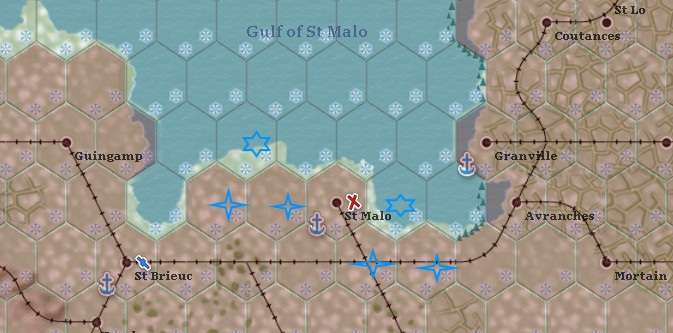
Since this is also the end of 1943, few contextual charts. No surprise for the bombing VP chart. On balance I think that 55 morale has proved to be a good choice (before I've tended to set it higher) and 2-3 days/week has meant a sustained steady effort with no pauses (apart from for weather).

Air losses. Substantial variation turn by turn but on balance the ratio looks like .9:1 (axis:allied).
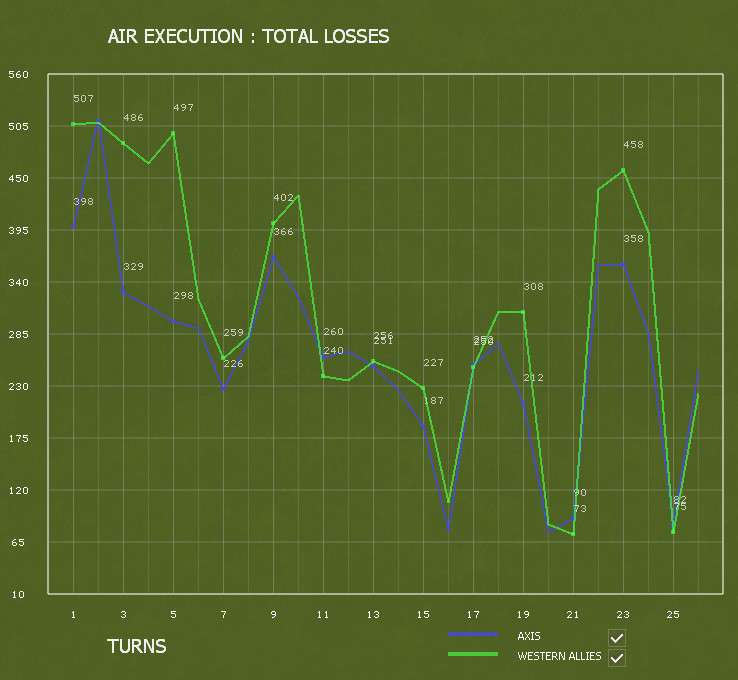
Detailed air loss charts. Lost planes actually in my favour but the pilots at a ratio of .6:1. Again that suits me as I can (mostly) replace, the Germans can't.

This just shows the German losses. The Bf-109s have had a real battering, in part related to my aggressive use of FC and its Spitfires.
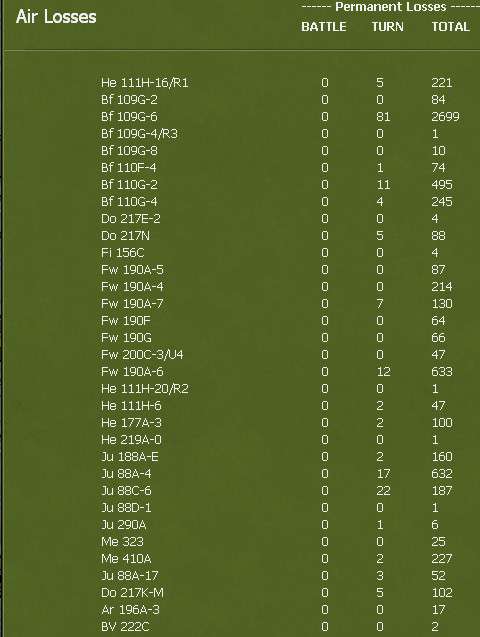
Finally land losses. Bit misleading as a lot of the Axis captured will have been Italian formations that were cut off in the Sicily battles.
One issue is that even though I have started to bomb their tank production I doubt I've knocked out enough German tanks to make much of a difference yet. Goal really is to eliminate German replacement capacity so that the Pzr divisions become fragile and find it hard to replace their losses.
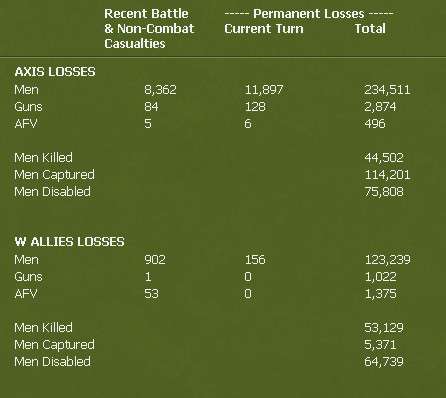
So T27 brings 1944 and planning for France.

